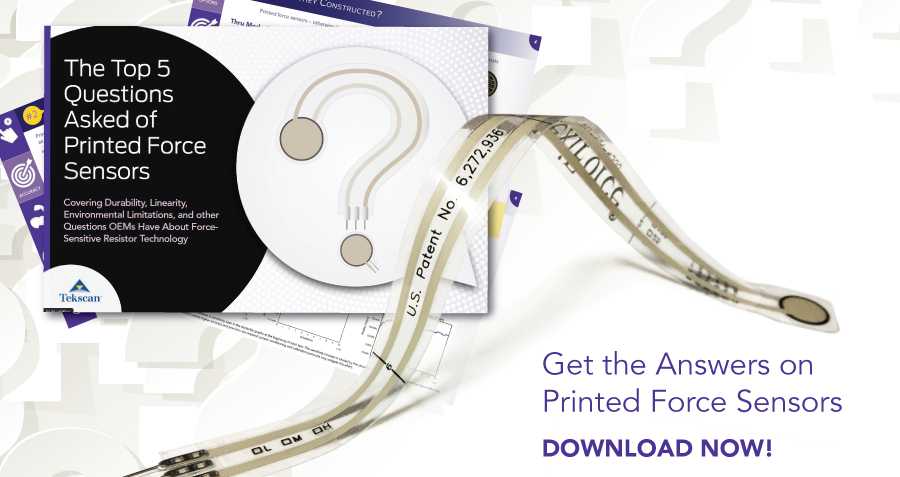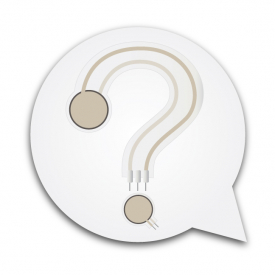Printed electronics and sensing technologies of all kinds have garnered plenty of interest among the worldwide design engineering communities -- especially force sensors. However, beyond their obvious physical properties, there's a lot that design engineers may not know about printed force sensors, like FlexiForce™ sensors.
This eBook will answer the most common questions asked about printed force sensors to help you determine if this technology will be a good fit for your embedded design, including:
- What are your printed force sensor options?
- How durable and accurate are printed force sensors?
- What force ranges can printed force sensors capture, and more!
The Top 5 Printed Force Sensor Questions: Asked and Answered!
- How are Printed Force Sensors Constructed? Ultra-thin and flexible printed circuits consisting of two flexible substrates (polyester film).
- How Accurate are they? The fact that they are passive, have linear conductance responses, and have a very large dynamic range of resistance, allows for the design engineer to use simpler electronics that do not require a lot of filtering.
- How Durable are they? According to our internal testing standards and third party testing - quite durable!
- How Much Force can you measure with a printed force sensor? FlexiForce sensors, for instance, have such a wide dynamic range that allows them to capture much greater forces simply by changing the reference voltage and/or adjusting the gain of the circuit.
- What environmental conditions can an embedded force sensor stand up to? Tekscan has developed advanced formulas for our conductive materials that will optimize sensor performance for extreme temperature and humidity applications.
- (Bonus)! What are common uses for printed force sensors?

